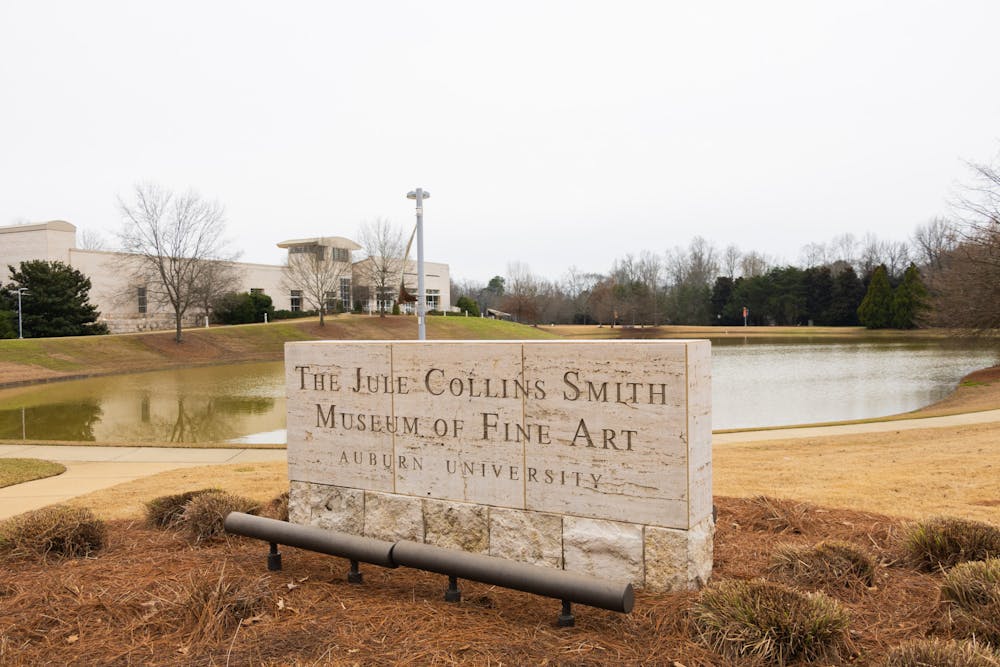There is a new exhibit open at the Jule Collins Smith Museum of Fine Art that features southern artists. The exhibit will be open until July, giving students and citizens a chance to view the works.
The theme for the Winter-Spring exhibit is Examination of Southern Art and Culture. It presents artists who are either from or heavily influenced by the American South.
One of the featured artists is Walter Hood, who grew up around segregation in his formative years. His paintings are biographical, depicting scenes from his childhood and adolescence. This is a new step for the artist who is known for his architectural work.
Student Kezia Akwensi remarked on her attachment to Hood’s use of vibrant color within his painting style.
“So, seeing Walter Hood utilize them and especially regarding his early life, brings a sense of joy,” Akwensi said.
In addition to Hood, Elizabeth M. Webb explores a different aspect of segregation, the land on which it sat. Webb examined land within Lee County that was owned by her ancestors. She delved into color lines, and how boundaries were marked to indicate property lines. Her exhibit is titled “Radical Naturalism”.
One piece within her exhibit is set on a film strip and played across a wall in the gallery. This film represents a deep connection with the property itself, having been buried in the soil by Webb. Charlotte Hendrix, Director of Communications and External Relations, spoke about her connection to the piece.
“Conceptually it is fascinating, especially with my background in film,” Hendrix said, remarking on the reel. “The buried film itself is what is displayed, and the acid corrupted the strip.”
Bethany Collin’s exhibit titled Accord, was the product of being asked the question over and over “What does it mean to be a southern artist?” In response, she took news articles published works, and painted with charcoal over the text.
Her intention goes beyond the art, and down to the paper itself. In her series titled “Old Ship”, she uses “cast paper made from confederate granite” as stated by her website.
“She transformed the material from honoring Stone Wall Jackson to honoring the Old Ship Church,” Hendrix said, referring to the Old Ship Zion Church in Montgomery, Alabama.
Lastly, in the exhibit titled “Black Codes”, four artists are brought together. Thornton Dial, Lonnie Holley, Ronald Lockett, and Joe Minter all felt the impact of Jim Crow laws within the American South.
“...these men made works that are not simply illustrations of history but that are also hidden transcripts, visions of alternative futures, and radical archives of Black determination,” says the museum website.
Their exhibit is meant to highlight the artistic output of Alabama, and how the men used their art and available means to tell their stories.
The decision to feature these artists and themes was not taken lightly, as it ties into the museum’s history as well. Hendrix recalls that one of the first lots of art purchased by the museum was one of great controversy.
“Advancing American Art featured immigrants and women, people of color,” Hendrix said. “It was a cultural shift for museums at the time.”
Though that was many years ago, the Jule continues to celebrate and honor Black, contemporary, southern artists to this day.
Do you like this story? The Plainsman doesn't accept money from tuition or student fees, and we don't charge a subscription fee. But you can donate to support The Plainsman.
Carrington Romanick is a junior from Helena, Alabama majoring in law and justice. She joined The Plainsman in August 2023.





